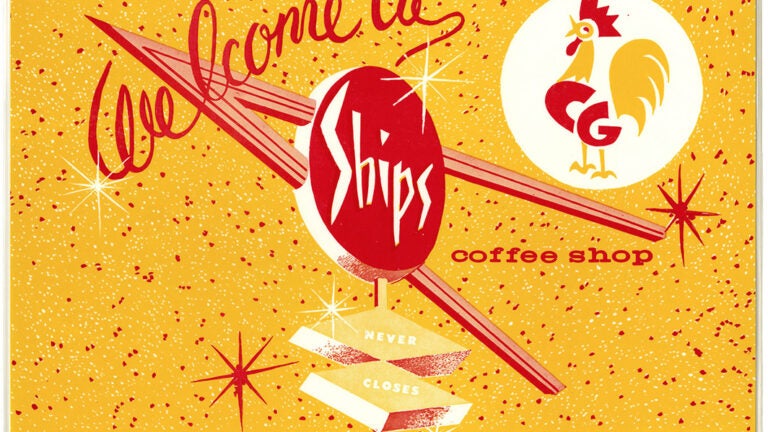
What Menus Can Tell Us About Our City
Menus are ostensibly utilitarian objects, enabling patrons to figure out what dishes are available at a restaurant. But in his latest book, To Live and Dine in L.A.: Menus and the Making of a Modern City, author, curator and USC professor Josh Kun argues it is so much more.
“I knew going in that I didn’t want to write a book that was just about menus as food texts. I knew right away that I wanted to write about menus as urban texts,” said Kun, who has joint appointments in USC Dornsife’s Department of American Studies and Ethnicity, and at USC Annenberg School for Communication and Journalism. “What do menus tell us about the city? What do menus tell us about culture, race, gender, class and identity?”
For more than a year, Kun and a group of undergraduate and graduate students from USC combed through the Los Angeles Public Library’s 9,000-piece menu collection, weaving together the threads of culinary history in the city — how, where and what people ate in Los Angeles and what that says about living in the city for the past century.
Published by Angel City Press, the book showcases more than 200 Los Angeles restaurant menus from 1875 through the 1980s. Along with these images are thoughtful texts that help readers move beyond the visual quality of these artifacts.
In the book’s foreword, popular restaurateur and burgeoning food activist Roy Choi speaks about Los Angeles as a city always “in the moment” and the reasons he personally writes “weird-ass menus”; Pulitzer Prize-winning food critic Jonathan Gold examines food as a kind of theater; Guelaguetza’s Bricia Lopez muses on Koreatown and Oaxacatown relations; and Los Angeles County Museum of Art curator Staci Steinberger reviews Los Angeles menus as design objects.
A new spin on old menus
As a tasty dessert, Kun turned eight old menus over to eight contemporary chefs — such as Nancy Silverton, Micah Wexler and Susan Feniger — and asked them to put a 21st-century spin on vintage menus.
Their commentaries reveal what they would change about the fare and the presentation of these artifacts given today’s culinary landscape.
Kun teaches readers to look beyond the utilitarian aspects of the menu to reveal the story of a city in progress. Among the author’s discoveries is the cyclical nature of dining.
“What we now think of as contemporary food trends like farm-to-table dining, provenance on menus and health-food eating go back as early as the 1900s,” Kun said.
Expensive eateries
Kun also reveals the socioeconomic portraits painted by these menus. The earliest menus in the library’s collection were from the upscale dining spots, which raised the question, “Where did everybody else eat?”
“Going out to eat in a restaurant in the 19th century, no one did it. It was a tremendous economic privilege. You had to be well off to eat out at a restaurant,” Kun said, “In contemporary food culture, it’s still very much an issue when all the hottest restaurants and all the places everybody wants to eat are very, very expensive. There are huge populations in this city that not only cannot afford to eat at expensive restaurants, but can’t afford to eat at the most inexpensive restaurants.”
Kun’s last project, “Songs in the Key of Los Angeles” also brought to life a Los Angeles Public Library collection: Southern California Sheet Music from the 1840s through the 1950s.
“Food and music function culturally in very similar ways,” Kun said. “On the one hand, both food and music can be things that tell us who we are, that can restore a connection to our identity, our tradition, our cultural, our past, our family, our memory, to our neighborhoods. At the same time, a song or dish can help us cross out of who we are and think across the boundaries of culture and history.
“Just because I grew up eating this dish doesn’t mean that I’m not going to fall in love with that dish,” he added. “When I fall in love with that dish, maybe it opens me up to a whole other cultural view.”
To Live and Dine in L.A. will be available for purchase this month. An exhibition and public programming at the Central Library will also accompany it.
“It’s an exhibition that goes off in its own direction,” Kun said.
The exhibition, which began June 13, will feature more than 50 menus from the library’s collection including rare first editions and menu printing materials donated by The Lord Menu Co., which designed, printed and delivered menus daily to landmark Los Angeles restaurants like Bob’s Big Boy, The Brown Derby and Perino’s.